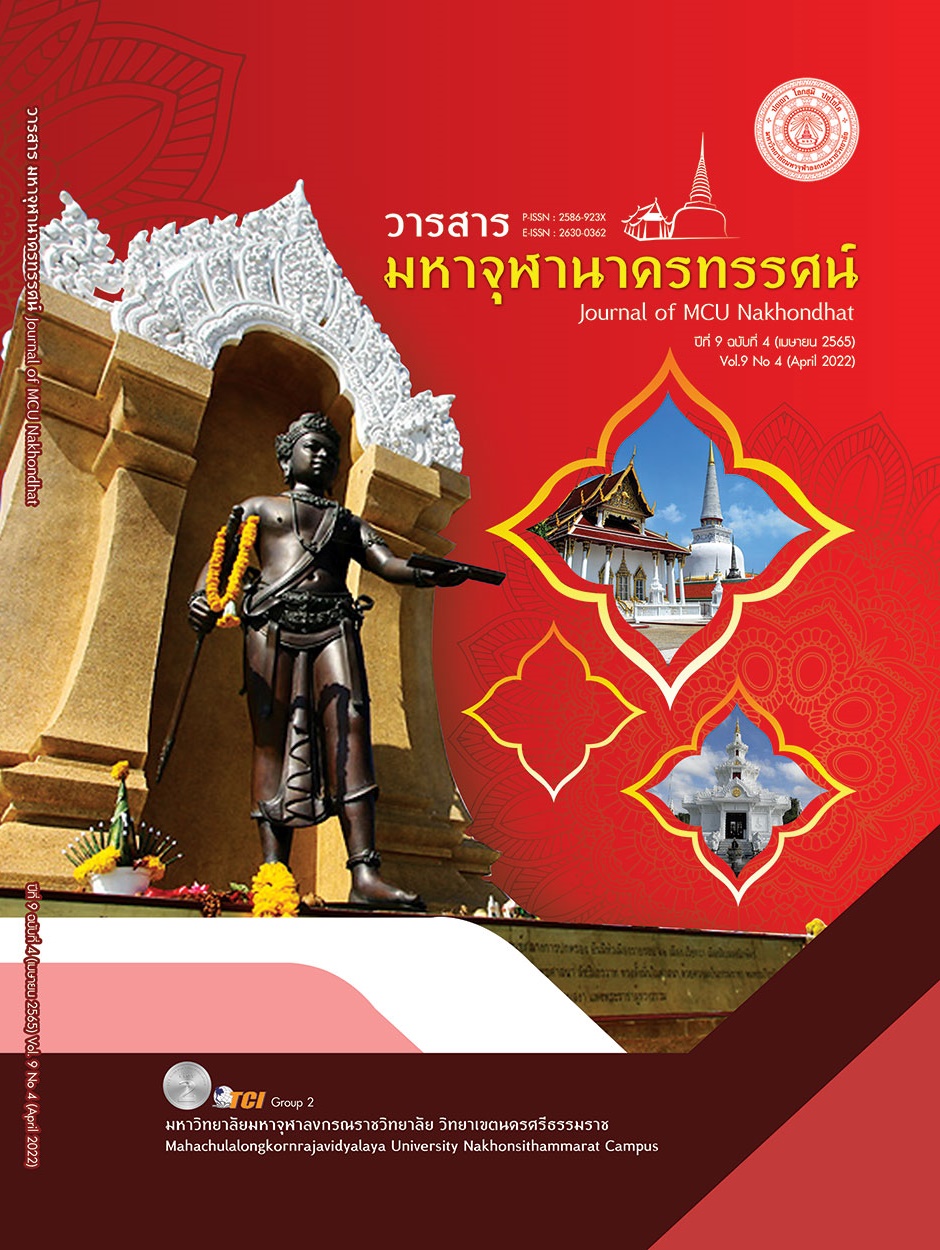THE DEVELOPMENT OF GENTLEMAN BAG’S FROM KAREN CLOTH, LAMPHUN
Main Article Content
Abstract
The purposes of this research were: 1) to design and develop a product model of a gentleman's bag made from Karen cloth from Phrabat Huai Tom community group, Na Sai Sub-district, Li District, Lamphun Province. and 2) to convey and evaluate the product model of a gentleman's bag from woven fabrics of the Phrabat Huai Tom community group, Na Sai Sub-district, Li District, Lamphun Province. The population and the sample group were tourists in Lamphun Province and 100 members of Phrabat Huai Tom Community Weaving Group, Na Sai Sub-district, Li District, Lamphun Province, by choosing a specific model, 100 people and research tools were questionnaires and product pattern assessment forms. The statistics used in the analysis were percentage, mean, and standard deviation. The results showed that Most of the male tourists, aged between 36 - 45 years, civil service/government workers/state enterprises Overall satisfaction with the styles of men's bags from Karen woven fabrics was at the highest level, with an average of 4.89, representing the refinement and beauty of the product, followed by the strength and durability of the product, with an average of 4.67, the development of unique product styles of the community to add value to the products to meet the needs of today's consumers found that tourists who prefer products of most ethnic groups There is a demand for ethnic products that can be used in daily life and want products with modern styles can be used in many ways. The transfer and evaluation of the product model of a gentleman's bag from Karen cloth of the Phrabat Huai Tom community group, Na Sai Sub-district, Li District, Lamphun Province, found that when the weaving group had knowledge and understanding of the product prototype from the knowledge transfer, it was able to replicate the Tailoring the product according to the prototype.
Article Details

This work is licensed under a Creative Commons Attribution-NonCommercial-NoDerivatives 4.0 International License.
References
กษิรา ภิวงศ์กูร และคณะ. (2562). การศึกษาลวดลายชาติพันธ์ชนเผ่า ในการออกแบบผลิตภัณฑ์ของที่ระลึก หมู่บ้านกระเหรี่ยงรวมมิตร. วารสารมังรายสาร, 7(2), 123-140.
จรัสพิมพ์ วังเย็น. (2554). แนวคิดหลังสมัยการย้อนสู่โลกแห่งภูมิปัญญา. วารสารสถาบันวัฒนธรรมและศิลปะ(สาขามนุษยศาสตร์และสังคมศาสตร์) มหาวิทยาลัยศรีนครินทรวิโรฒ, ปีที่13 (1), 20-23.
จินตวีร์ เกษมศุข. (2561). แนวคิดการมีส่วนร่วมของประชาชนเพื่อการพัฒนาชุมชนที่ยั่งยืน. วารสารวิชาการมนุษยศาสตร์และสังคมศาสตร์, 26(50), 169-185.
ซิสิกกา วรรณจันทร์. (2555). การออกแบบและพัฒนาผลิตภัณฑ์ผ้าใยไผ่เพื่อสร้างเอกลักษณ์สู่การพัฒนาเชิงพาณิชย์ ในชุมชนภาคตะวันออกเฉียงเหนือตอนใต้. ใน รายงานการวิจัย. มหาวิทยาลัยมหาสารคาม.
นริสรา ลอยฟ้าและคณะ. (2563). แนวทางการพัฒนาผลิตภัณฑ์และการเพิ่มช่องทางการตลาด ผ่านระบบพาณิชย์ อิเล็กทรอนิกส์ของกลุ่มวิสาหกิจชุมชนทอผ้าท้องถิ่น จังหวัดศรีสะเกษ. ใน รายงานวิจัยฉบับสมบูรณ์. สำนักงานการวิจัยแห่งชาติ.
ศูนย์หัตถกรรมบ้านห้วยต้ม. (2564). ศูนย์หัตถกรรมบ้านห้วยต้ม ศูนย์วิจัย. เรียกใช้เมื่อ 20 พฤษภาคม 2562 จาก https://thailandtourismdirectory.go.th/th/info/store /detail/itemid/81027
สายทอง เงินเลิศสกุล และคณะ. (20 พฤษภาคม 2562). ประวัติความเป็นมากลุ่มทอผ้าชุมชนห้วยต้ม. (นายศรัณย์ จันทร์แก้ว, ผู้สัมภาษณ์)
สำนักงานนวัตกรรมแห่งชาติ. (2559). รายงานประจำปี 2559. กรุงเทพมหานคร: สำนักงานนวัตกรรมแห่งชาติ.
สุธีลักษณ์ ไกรสุวรรณ และคณะ. (2553). เสื้อผ้าชนเผ่าไทย: รูปแบบและเทคนิคการตัดเย็บผ้าชาวเขาเผ่าม้งน้ำเงิน กระเหรี่ยง เย้าและมูเซอดำ. วารสารเกษตรศาสตร์(สังคม), 31(2), 194-205.
อรัญ วานิชกร. (2559). การออกแบบผลิตภัณฑ์ท้องถิ่น. (พิมพ์ครั้งที่ 1). กรุงเทพมหานคร: จุฬาลงกรณ์มหาวิทยาลัย.


